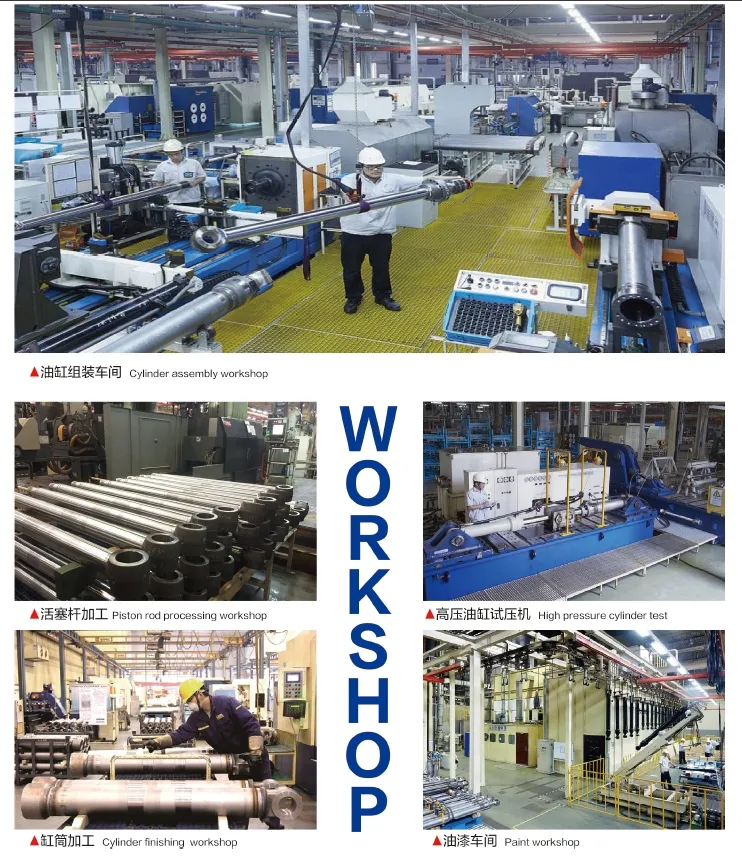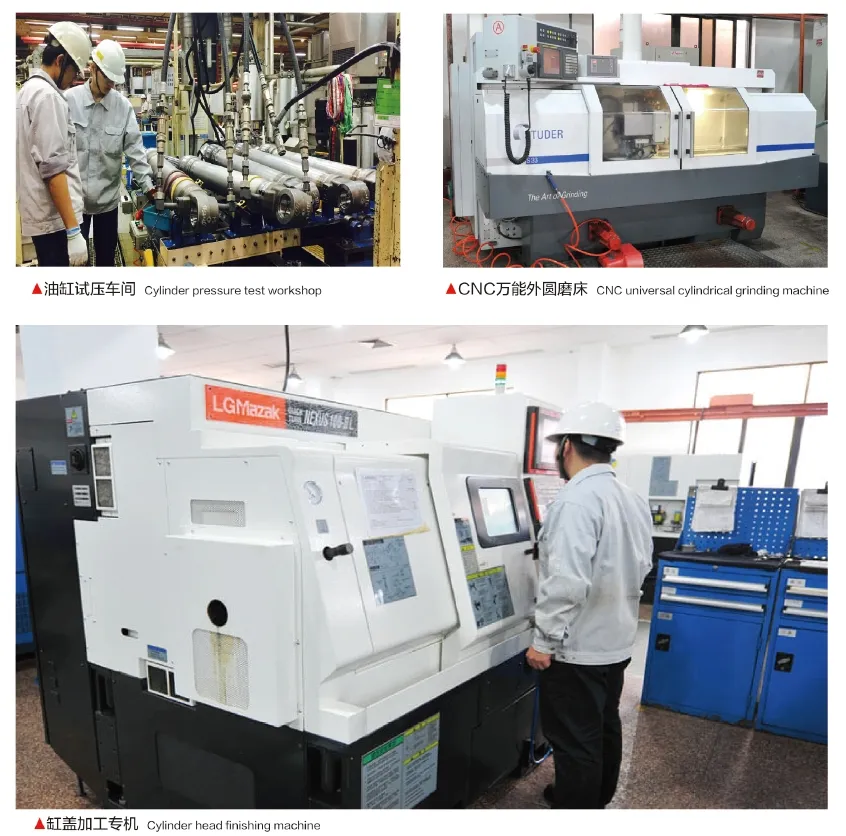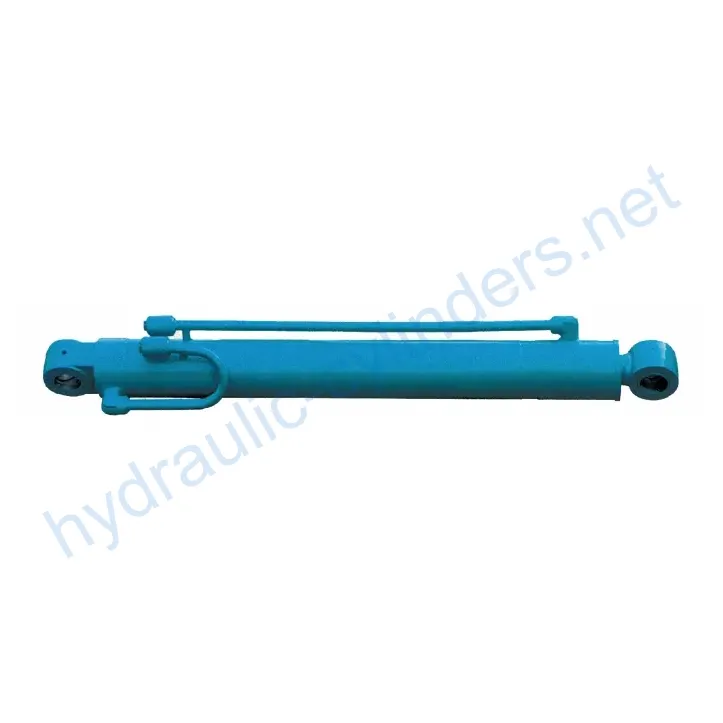Arm CylinderFor XCMG Middle Excavator XE265C
As one of the hydraulic cylinders manufacturers, suppliers, and exporters of mechanical products, We offer hydraulic cylinders and many other products.
Please get in touch with us for details.
Mail:sales@hydraulic-cylinders.net
Manufacturer supplier exporter of hydraulic cylinders.
Arm Cylinder For XCMG Middle Excavator XE265C
Introduction
Definition and Explanation
The arm cylinder is a specially designed hydraulic cylinder that is primarily used to provide linear motion and power to the arms of various types of machinery, such as excavators, cranes, and mechanical arms. The arm cylinder plays a crucial role in hydraulic systems, enabling the efficient movement and control of additional tools or attachments. These cylinders not only achieve smooth movements but also withstand heavy loads, ensuring efficient operation and reliability of machinery under various operating conditions.

Features
- Efficient Power Transmission: The arm cylinder can provide powerful linear motion and force, ensuring high efficiency and performance of the mechanical arm in various operations.
- Precise Control: Through the hydraulic system, the arm cylinder can achieve precise movement control, making the operation of additional tools more flexible and accurate.
- Strong Durability: Arm cylinders are usually made of high-strength materials and have good wear and corrosion resistance, making them suitable for long-term use in harsh environments.
- Multi-functional Adaptability: These cylinders can be widely used in various mechanical equipment, such as excavators, cranes, and mechanical arms, to adapt to different working needs.
- Easy Maintenance: Consideration of design for easy maintenance and replacement makes regular checks and maintenance more convenient, reducing equipment downtime.

Applications
- Building Construction: In excavators and cranes, arm cylinders are used to control the movement of the bucket or boom for earthwork, material handling, and structural installation.
- Manufacturing: In automated production lines, arm cylinders are used for the movement of mechanical arms, performing assembly, welding, and handling processes to improve production efficiency and accuracy.
- Agricultural Machinery: In agricultural machinery such as harvesters and planters, arm cylinders control the movement of the operating arm, performing tasks such as seeding, fertilizing, and harvesting.
- Mining: In mining equipment, arm cylinders are used to control the arm movement of mining equipment for mining and transportation of ores.
- Logistics and Transportation: In forklifts and handling robots, arm cylinders are used to control the lifting and movement of the fork to handle and stack materials.
Design Considerations and Selection Criteria
Load-Bearing Capacity
The load-bearing capacity of arm cylinders is an important design consideration. It is essential to ensure that the cylinder can withstand the maximum load that it may encounter during operation.
Sealing
Various sealing components are used in arm cylinders, such as piston seals and rod seals. The materials used for sealing components, such as polyurethane and nitrile rubber, are wear-resistant and corrosion-resistant, ensuring efficient operation and extending the service life of the cylinder.
Durability
Arm cylinders are subjected to harsh operating conditions, such as high pressure and corrosive environments. Therefore, it is crucial to use high-strength materials and surface treatments to enhance the cylinder’s resistance to wear and corrosion.
Safety
Arm cylinders must comply with safety standards to ensure that they can operate safely in various working conditions, such as overloading and impact. Safety measures may include limit switches, pressure relief valves, and shock absorbers.
Maintenance
The design of arm cylinders should consider easy maintenance and replacement of components to reduce downtime and maintenance costs.

Sealing and Lubrication
Various sealing components are used in arm cylinders, such as piston seals and rod seals. The materials used for sealing components, such as polyurethane and nitrile rubber, are wear-resistant and corrosion-resistant, ensuring efficient operation and extending the service life of the cylinder. The cylinder body and threaded end surface are finely processed to improve wear resistance. Regular addition of appropriate hydraulic oil is required for lubrication.
Maintenance and Preventive Measures
- Regular inspection of the cylinder’s operating condition to ensure that it is functioning correctly.
- Regular replacement of sealing components to prevent oil leakage and damage to other components.
- Regular addition of hydraulic oil to maintain the required level of lubrication.
- Prevent the cylinder from operating in conditions beyond its rated capacity.
- Ensure the hydraulic system’s cleanliness to prevent contamination.

Installation Guide
Before installation, check the cylinder for damage, deformation, or rust. Ensure that the installation position is correct and that the threaded ends are clean. Install the cylinder according to the equipment manufacturer’s specifications, and tighten the bolts to the correct torque. After installation, test the cylinder for correct operation, such as leakage, smooth movement, and correct positioning of the piston rod.

Safety Considerations and Environmental Factors
When operating arm cylinders, safety measures should be taken to prevent overloading, impact, or other dangerous situations. Proper disposal of used hydraulic oil and other waste materials is also essential to minimize environmental impact.
Troubleshooting and Common Issues
- Leakage of hydraulic oil: Check the sealing components and tighten the threaded connections.
- Slow movement: Check the hydraulic flow rate and pressure.
- Abnormal noise: Check for damage to components or loose connections.
- Failure to move: Check that the operating conditions are within the cylinder’s rated capacity.
- Excessive vibration: Check the equipment’s foundation and support.
About Us
We are a professional manufacturer of replacement hydraulic cylinders, providing a wide range of products and becoming one of the leading hydraulic cylinder manufacturers and wholesale distributors in domestic and international markets. We always uphold the principle of excellent quality and rely on the industrialized production management strategy of precision manufacturing workshops to continuously improve technical level and production efficiency. Through the introduction of high-end digital manufacturing equipment and professional testing systems, we continuously optimize the manufacturing platform, improve the product quality control process, and have strong innovation capabilities. Our goal is to meet the diverse needs of customers with the principles of efficiency, accuracy, and high quality.
- Professionalism
- International Certification
- Customization Services
- Production Equipment
- After-sales Service


Author: lyl
Take a Tour of Our VR Factory:
Take a tour of our VR factory with the following
Hydraulic Cylinder Application:


